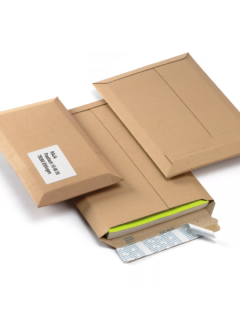Maritime transport is a key component of the global economy, enabling the efficient transportation of goods between countries and continents. Those involved in it are obliged to comply with regulations governing the safe and efficient transport of goods. These issues are addressed in detail in various pieces of legislation. What information can be found in them? Learn about the packaging regulations for shipments destined for sea transport.
How to pack a parcel for sea transport?
Robust packaging of transported goods plays a key role in sea transport, as they are exposed to a number of damages resulting, for example, from changing weather and prevailing conditions.
Above all,packaging should provide effective protection against the extreme weather conditions that prevail at sea. These include high humidity, fluctuating temperatures, salinity and lack of free airflow. In addition, it is necessary to protect against potential mechanical damage. You can read more about this in the article: How to secure shipments sent by sea?
In order to minimise the risk of the cargo moving inside the ship, the goods are most often put into a box and then placed in a container. In addition, it is advisable to use special anti-moisture measures, e.g. moisture absorbers inside the container.
During transport, the cargo in the container must be stable, especially if the crates are stacked vertically. Special wooden structures are used for this purpose, which are supported by air cushions. Although this stage is the last in the packing process, it is very important, as proper protection ensures that the consignment reaches its destination unharmed.
It is worth noting that, for complete control over the transport, sometimes devices are placed on the packages to monitor the condition of the cargo during the journey. These may include shock, tilt, temperature or humidity indicators. Proper labelling of each shipment is also essential, which contributes to logistical efficiency.
Packaging requirements for maritime transport
It is worth taking a closer look at the specific packaging requirements for maritime transport. What rules apply in this case?
- Use of robust transport units – containers are the preferred transport units as their use allows shipments to be adequately secured. However, weight limits must be borne in mind.
- Stable placement of cargo – transport boxes made of fumigated wood help to place cargo stably in containers, especially when transporting machinery.
- Protection against damage – the use of transport straps and anti-corrosion film protects goods from damage due to various factors. Moisture absorbers, on the other hand, provide an answer to the challenge, how to protect a cardboard box from moisture.
- Labelling and identification marks – correct labelling of shipments is crucial, especially with the use of ISO and EPKF symbols, which indicate the type of cargo and the factors affecting its condition.
International maritime packaging regulations
The International Maritime Packaging Regulations are a key set of standards governing the safe and efficient preparation of goods for maritime transport. These regulations aim to ensure optimal conditions for the safety of the cargo, the ship’s crew and to minimise environmental risks. International organisations, such as the International Maritime Organisation (IMO), develop standards covering such issues.
Documents developed by the IMO that are worth mentioning in the context of maritime transport are primarily:
- The 1960 Convention for the Safety of Life at Sea. – specifies that loading documents should confirm the proper packaging and securing of the shipment and have a identification label,
- 1972 Safe Containers Convention. – allows goods to be packed into containers that are considered safe.
Also relevant are the Incoterms 2020 Rules, which were developed by the International Chamber of Commerce, and the MO/ILO/UNECE Code of Practice for the packaging of transport and cargo units (CTUs).
For the transport of dangerous goods such as industrial machinery, on the other hand, the regulations arising from the European ADR agreement apply. Slightly different requirements also apply to wooden packaging. It is then worth referring to the ISPM 15 standard, which regulates the handling of wood in international trade.
Maritime parcel transport – summary
International sea transport requires compliance with precise regulations for the packaging of shipments. Compliance with these regulations not only guarantees the safety and security of the goods, but also affects the efficiency of the transport. Therefore, it is advisable to use the expertise of specialist companies before you embark on sea transport to ensure trouble-free transportation, especially for valuable and fragile cargo.














